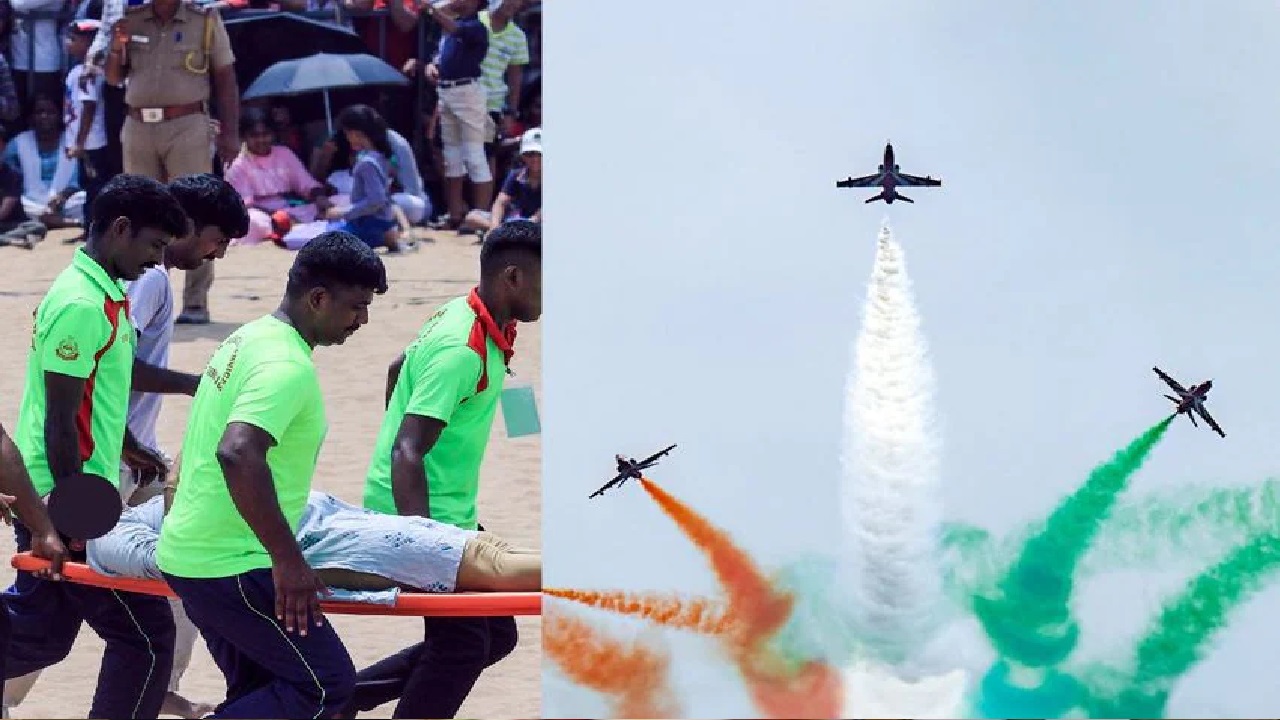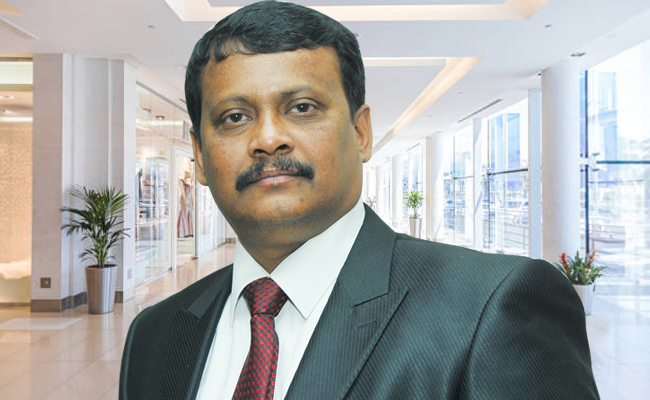
What was meant to be a proud celebration of India’s Air Force (IAF) prowess turned into a devastating event at Chennai’s Marina Beach on Sunday, October 6. Five spectators tragically lost their lives, and over 100 others were hospitalised following the IAF’s air show, held to mark its 92nd anniversary. The sheer scale of the event—expected to draw 15 lakh spectators—coupled with overcrowding and scorching heat, resulted in a chaotic and deadly aftermath.
A Spectacular Display Turns Deadly
Thousands flocked to Marina Beach early in the morning to witness Chennai’s first air show in over two decades. By 7 AM, families with children and elderly members were pouring in from across the city, eager to get a good view of the spectacle. The air show, scheduled for 11:30 AM, promised to be a memorable event, featuring 72 aircraft, including Rafale jets, the indigenous Tejas, and the mighty Sukhoi SU-30.
The aerial display was nothing short of awe-inspiring. The Sukhoi Su-30 fighter jet’s “Loop-tumble-yaw” manoeuvre, alongside the Suryakiran and Sarang helicopter displays, had the crowd mesmerised. The event showcased India’s military might and skill, with performances that had Marina Beach buzzing with national pride. However, the celebratory atmosphere would soon take a tragic turn as the event drew to a close.
The Aftermath: Chaos and Tragedy Unfolds
As the show concluded in the afternoon, the enormous crowd—reportedly over 10 lakh people—tried to exit the venue simultaneously. With limited exit points and intense heat bearing down on the city, chaos erupted. Spectators were trapped for over 40 minutes under the blazing sun, causing widespread panic and creating a stampede-like situation. The crowd’s desperation to leave led to breaches in barricades, exacerbating the chaos.
Witnesses described harrowing scenes. “It was like a sea of humanity. We were stuck for over two hours, unable to move,” one attendee recounted. The lack of clear crowd control and insufficient transport arrangements added to the misery, as people struggled to find a way out. Ambulances attempting to reach the injured were stuck in the traffic, further delaying medical assistance.
Five individuals tragically lost their lives during the chaos. Among the victims was Karthikeyan, a 34-year-old from Thiruvottiyur who collapsed on Rajaji Road while trying to leave the venue with his family. He was rushed to the hospital, where he was declared dead. Others in the crowd were rushed to hospitals suffering from severe dehydration, heat stroke, and related complications. Doctors treating the injured noted that many were suffering from heat-induced illnesses, with several cases of cardiac arrests linked to heat stress.
Dehydration and Overcrowding: The Culprits?
The soaring temperatures on Sunday, combined with overcrowding, were primary contributors to the disaster. As lakhs of people gathered without proper shade, hydration, or crowd management, the heat became unbearable. Dr Therani Rajan, speaking to The Hindu, explained that high temperatures can trigger a “systemic inflammatory response syndrome (SIRS),” where the body’s vital organs begin to fail. This, combined with arrhythmia caused by dehydration, resulted in several cardiac arrests.
Many spectators had come prepared with umbrellas and water, but thousands arrived without basic provisions, unaware of the physical toll the sun and crowded conditions would take. Public transport was overwhelmed, with the Chennai Metro Rail Services unable to accommodate the sheer volume of people, adding to the strain. Videos on social media showed packed trains and buses, unable to manage the crowd that had poured in for the event.
Political Fallout: Criticism of Government and Event Planning
The tragedy soon turned political, with opposition parties blaming the Tamil Nadu government for poor planning and inadequate safety measures. Leader of the Opposition, Edappadi K Palaniswami of the AIADMK, criticised Chief Minister MK Stalin’s administration, accusing it of failing to make appropriate arrangements for such a massive event.
“My deepest condolences to the bereaved families,” Palaniswami said. “The government claimed that transportation and basic facilities were in place, but the reality was far from it. In many cities, similar air shows went off without any issues, but in Chennai, we witnessed a tragic loss of lives. This is a clear failure of the DMK government.”
BJP leader Annamalai echoed these sentiments, accusing the state government of negligence. “The DMK government didn’t ensure the public’s safety or make adequate transport arrangements,” Annamalai stated. “This isn’t just an accident—it’s a failure of administration.”
On social media, Tamil Nadu BJP chief Annamalai and national spokesperson CR Kesavan both called out the “negligence and incompetence” of the ruling DMK government. The opposition was united in condemning the state administration, arguing that the tragedy was avoidable with better crowd management and public safety measures.
Government’s Response: Defending the Arrangements
In response to the mounting criticism, Tamil Nadu’s Health Minister Ma Subramanian defended the government’s role, stating that they had provided facilities beyond what the IAF had requested. He also added that the state’s health system had quickly mobilised to treat those affected by dehydration and heat stroke, though the number of victims overwhelmed the system.
Meanwhile, DMK MP Kanimozhi Karunanidhi expressed her sorrow over the deaths but implied that the IAF should have better managed the event, given the expected crowd size. “Unmanageable gatherings should be avoided,” she remarked, hinting at the Air Force’s aim to set a world record by drawing 15 lakh spectators.
Conclusion: A Somber Reflection
What was intended to be a celebration of the Indian Air Force’s 92nd anniversary will forever be remembered for the lives lost and the chaos that ensued. As the investigation into the event continues, questions will remain about whether the tragedy could have been prevented with better planning and safety protocols. The deaths of five innocent people serve as a painful reminder that even the most spectacular displays of military prowess can be overshadowed by human error and administrative failure.
(With inputs from agencies)







